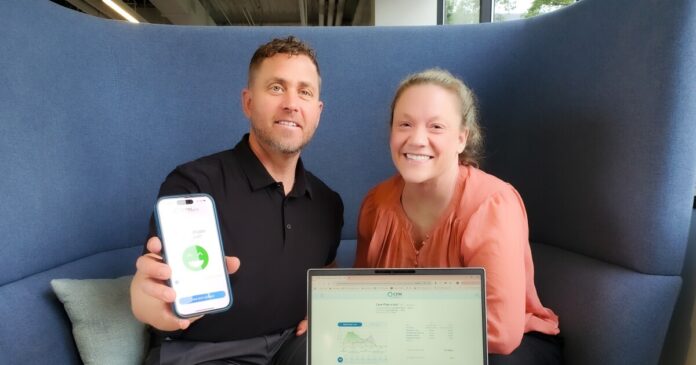
Drug overdose deaths decreased to about 3,213 in 2024, down from 4,442 in 2023, according to preliminary data from N.C. Department of Health and Human Services.
It’s a figure health care providers and policy experts have worked to decrease for years, and was driven up after the proliferation of opioid medication prescriptions. Settlements with drug makers and large chain pharmacies lead to billions dedicated to reducing opioid misuse. North Carolina will receive $1.4 billion, much of which will go to county governments across the state.
While some of that funding will support direct services like Naloxone distribution, behavioral health programs, or housing assistance, one Research Triangle Park-based app developer wants to help doctors and patients right-size their opioid prescriptions before overuse even begins.
Steven Walther, CEO of Continuous Precision Medicine, or CPMed for short, says the company recognized a blind spot in how physicians and patients interact after a surgery. Most of the time, the patient receives a prescription for pain killers, returns home for recovery, and doesn’t communicate back to the physician for a week or more. During that gap, a doctor could better serve the patient’s needs by getting more real-time information about pain management.
To solve that information void, CPMed developed a cell phone app in which patients can input their pain levels when they take prescriptions that reports immediately back to the physician office. The doctor sees a data dashboard on every patient using the app to see a daily report on pain management and prescription adherence. Doctors can then analyze that data to inform prescribing habits going forward.
“If we can help prevent someone from going down the path of opioid misuse, it saves a lot of emotional hardship and costs,” Walther said.
Walther likens the fight against the opioid epidemic to fighting a wildfire. It needs direct services, treating people suffering from opioid use disorder just like a fire needs water on the actual flames. But it also needs advance work, like going ahead of a fire to reduce the chance of spreading.
Dr. Patrick Arnold, with Vista Oral Surgery and Implants in Aberdeen, said the information supported changes in prescribing habits. The oral surgeon used to prescribe anywhere from 20 to 30 opioid pills after a procedure, but has brought that down to between six and eight.
“It has changed the way I practice,” he said.
Arnold worked with the armed forces as well, including as residency program director in 2015 for the Fort Bragg Oral Maxillofacial Surgery Program. While there, he participated in a scientific study using the app and saw its benefits firsthand. He said another thing he learned was that “we have to do a better job of educating patients” to take other forms of pain medication, like ibuprofen, to minimize the use of narcotics when possible.
“Get in the mindset of the narcotic doesn’t need to be the first pill that you take,” he said.
The mobile app also allows patients to record when and how much medication they take. This lets doctors know of any unused pills, which can sit in medicine cabinets where their potential for misuse increases.
Of course, the app’s benefit extends only as far as the patient inputs. To increase the likelihood that patients will enter their pain levels and medication usage regularly, the app’s developers stripped it of nearly all bells and whistles and kept it as simple as possible.
When patients open the app, they first rate their pain level on a scale of 1-10, and then record which medicines they took. That’s pretty much it.
“The simplicity really has been very important,” Walther said.
Kristin Sarmiento experienced that firsthand. The Raleigh resident wasn’t on any chronic pain medications, but went through a procedure that removed about 10 pounds of skin and fat.
“As you can imagine, the recovery can feel pretty daunting,” she said.
The app helped her bring some “mindfulness” to the medications she took and she said the simplicity made everything easy for her.
Walther has high hopes for CPMed and the mobile app, but to reach those, he and his team need to crack into a health care payment system that doesn’t readily have a way to incentivize the benefit the app provides. Much of health care is paid for through private health insurers, and while there has been a move toward “value-based care,” the overall system still does a poor job of paying for preventing illness.
For this reason, Walther said it has been hard to break into the private markets where doctor practices rely on private commercial insurance to pay the bills. Instead, CPMed has found more success in the military and Veterans Affairs health space where the medical systems are more vertically integrated.
Long term, CPMed hopes to make the case that right-sizing pain medication prescriptions can save the health industry billions, while also reducing the instances of patients as risk for opioid use disorder.



